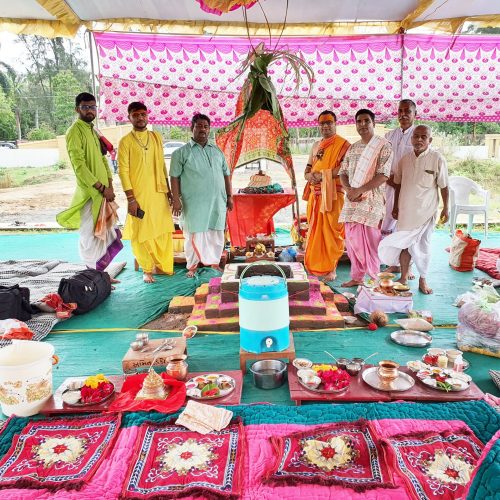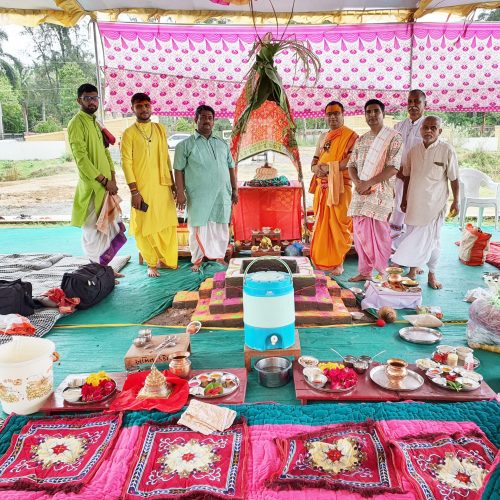



Navchandi Yagna and Rajopchar Puja are two significant rituals performed in Hinduism, particularly in the worship of the divine feminine energy.
- Navchandi Yagna: Navchandi Yagna is a sacred fire ritual dedicated to the Nav Durga, the nine forms of the Goddess Durga. It is a powerful and elaborate ceremony performed to seek the blessings of the goddess and invoke her divine grace and protection.
The ritual involves the recitation of the Durga Saptashati, also known as the Devi Mahatmyam, which is a compilation of verses describing the exploits and victories of the goddess. The recitation is done in a specific manner, following certain rituals and guidelines. The priests or qualified individuals chant the verses while offering various offerings, including ghee (clarified butter), flowers, incense, and sacred water, into the sacred fire.
Navchandi Yagna is believed to purify the environment, remove negative energies, and bring peace, prosperity, and well-being to the participants. It is often performed during auspicious occasions, such as Navaratri or other important festivals dedicated to the worship of the goddess.
- Rajopchar Puja: Rajopchar Puja is a ritualistic worship performed to honor and invoke the presence of a deity, usually a form of the divine mother or goddess. The term “rajopchar” translates to “royal offerings” or “elaborate worship.”
In this puja, the deity is adorned with exquisite clothes, jewelry, and flowers. Elaborate rituals and prayers are performed, accompanied by the chanting of mantras and the offering of various items such as fruits, sweets, incense, and lamps. The puja is conducted with utmost devotion and reverence, seeking the blessings and grace of the deity.
Rajopchar Puja is often performed in temples or at homes during festivals or special occasions dedicated to the specific deity. It is believed to create a divine atmosphere, establish a spiritual connection with the deity, and invoke divine blessings, protection, and prosperity.
Both Navchandi Yagna and Rajopchar Puja hold great significance in the worship of the divine feminine energy in Hinduism. These rituals provide devotees with an opportunity to express their devotion, seek divine blessings, and experience a deeper connection with the goddess, thereby enriching their spiritual journey.
